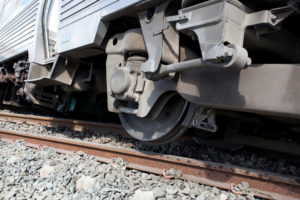That gasoline can in your garage sure looks safe. You bought it from a big box store – they would not sell it unless it is safe, right? Wrong. In fact, there is a key safety component that most manufacturers fail to install and which can lead to drastic consequences. That component is a flame arrester – a small piece of wire mesh that is installed in the spout. It allows the gasoline to flow out, but blocks gas vapors in. What does this mean in the real world?
Say you are burning trash in a 55 gallon drum. After the trash has burned for a while, the fire goes out, or so you think. You pour some gas on the unburnt trash so that you can relight the fire. Several lawsuits filed around the country allege that severe burns have benn suffered in these situations – caused by the flame in the can mixing with the gas vapors in the gas can spout, causing an explosion. But it does not only happen when the can is emptied on an open flame. Ask Landon Beadore, who age 3 knocked over a gas can in his garage, leading to an explosion that left scarring over half his body. The can he knocked over lacked a flame arrester – a safety device that would have cost the manufacturer less than a dollar to make and install.
Check the gas can in your garage today. See if there is a flame arrester in the spout. If there’s not – replace it with one that is so equipped. The manufacturer says that these explosions are only caused by misuse. Landon and his parents disagree. Why gamble?

Cum Laude graduate of Cumberland School of Law, Pet Mackey is a civil trial litigation expert who represents plaintiffs in business and consumer tort, contracts and construction, employment disputes and insurance. He is board certified as a Civil Trial Advocate by the National Board of Trial Advocacy, a Certified Alabama Mediator, and an “AV” rated lawyer by Martindale-Hubbell.










2 Comments
Hank Anderson
Technically, the flame arrester does not "lock the vapors in." It actually absorbs the heat from the flame, and disperses it throughout the metal of the device, thereby lowering the temperature below the temperature needed to explode the vapors. Landon is my client, and his injuries could have been prevented with the inclusion of a 79 cent flame arrester. Eagle put these devices in it's containers in 1978, but it no longer makes them.
Pete Mackey
Thanks for the clarification. I sure hope that you can get some justice for your client. Has the defendant ever come up with a justification for excluding flame arresters?
Comments for this article are closed.